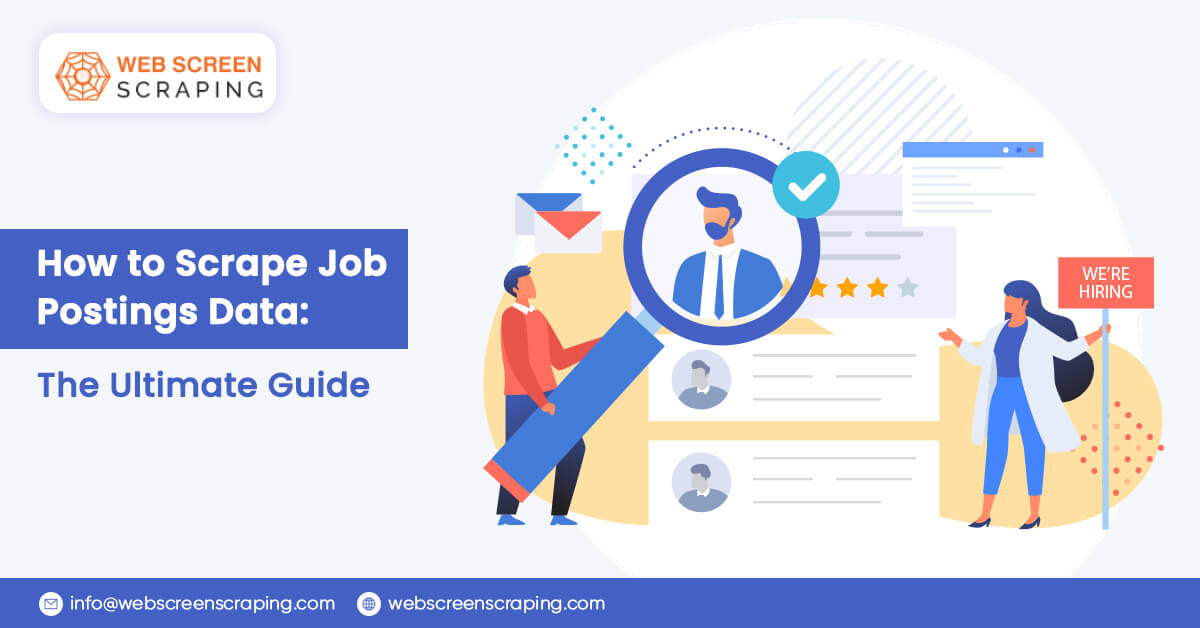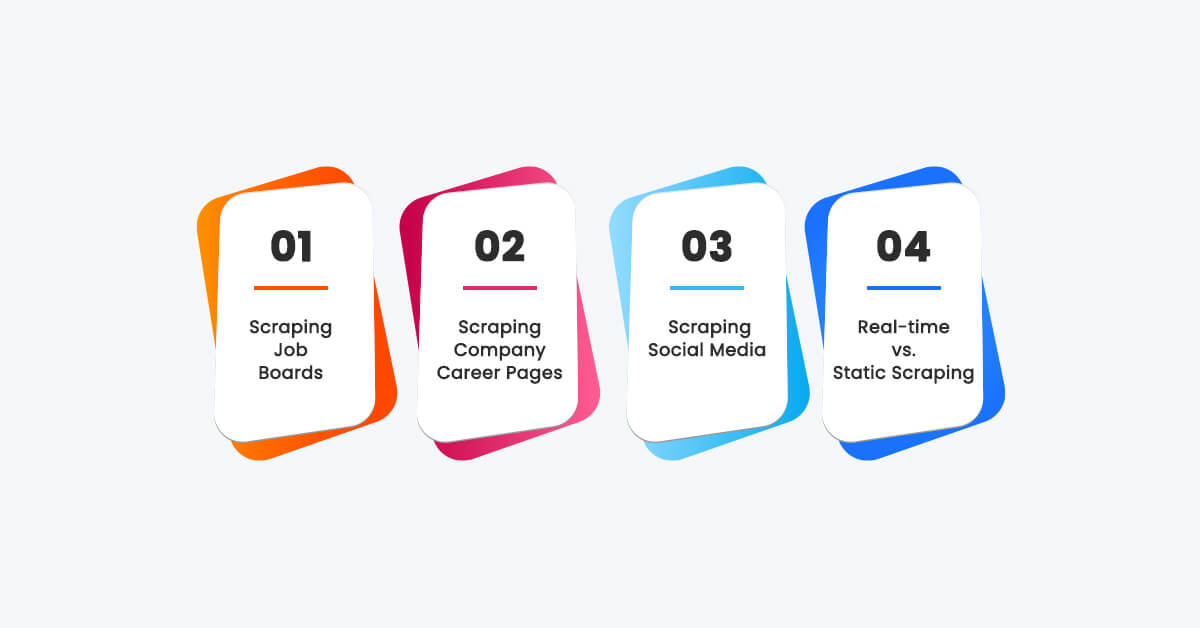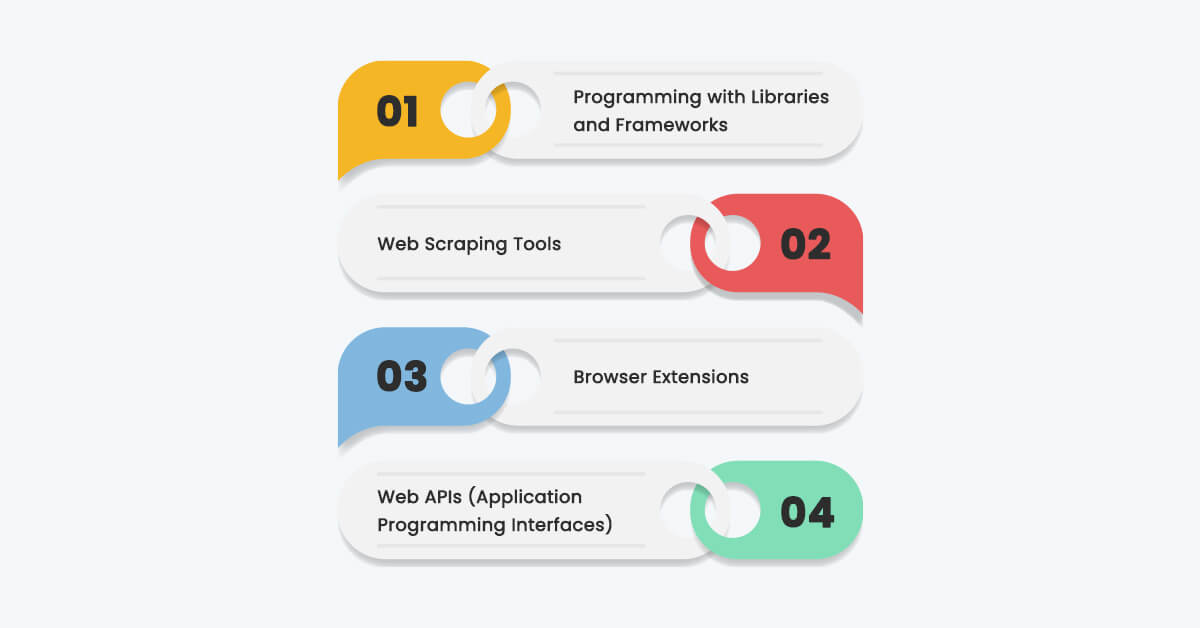
Are you struggling to find the perfect profiles hidden amongst countless listings and applications? What if there was a way to automate this process and build your personalized job database? This is where web scraping for job postings comes in. It's a powerful technique that unlocks a wealth of data, giving job seekers, recruiters, and businesses an unparalleled advantage. This detailed blog will explore everything about collecting job listings online. You'll learn to pick the best websites, scrape helpful information, and outsmart anti-scraping measures.
About Scraping Job Postings
Scraping job postings uses automated tools to gather information about job openings from various online sources and collect details like job titles, descriptions, company names, and locations from job boards, company career pages, and even social media.
This approach is better than the traditional, time-consuming method of manually searching for jobs on individual platforms. By scraping, you can:
- Save time and effort: Automate the search process and focus on applying for the most relevant opportunities.
- Expand your reach: Access a wider pool of jobs and profiles from multiple sources, increasing your chances of finding the perfect fit.
Why scrape Job postings
There are two main sides to the coin when it comes to why people scrape job postings. It can be a boon for both job seekers and businesses involved in recruitment.
For Job Seekers
- Efficiency: Scraped data can be compiled into a personalized database, allowing you to target specific roles and filter out irrelevant listings. This saves you tons of time compared to manually searching through numerous websites.
- Comprehensiveness: Scraping can gather postings from various sources, including niche job boards and company career pages, that you might otherwise miss during a standard search.
- Market Awareness: By analyzing scraped data, you can gain insights into current job trends, in-demand skills, and even salary ranges within your field.
For Businesses Involved in Recruitment
- Competitor Analysis: See what skills your competitors seek in their job postings. This allows you to tailor your offerings and recruitment strategies to attract top talent.
- Market Research: Gain valuable insights into job trends and identify skillsets that are high in demand. This can inform your talent acquisition efforts and training programs.
- Building Talent Pools: Scraped data can be used to proactively identify potential candidates who possess the desired skills and experience, even if they need to actively search for a new job.
For Analysts
- Track job trends: Identify in-demand skills, salary ranges, and the types of positions companies are hiring for.
- Gain market insights: Analyze scraped data to understand industry trends and make informed decisions about careers or recruitment strategies.
- Build a comprehensive job database: Consolidate information from various sources to create a valuable resource for researchers or job search engines.
Types of Job Posting Data Scraping
There are four main ways to categorize job posting scraping based on the source of the data:

Scraping Job Boards
This is the most common approach, where you extract information from major online job aggregators like Indeed, Monster, Glassdoor, or niche recruiting platforms. These websites offer a vast pool of listings, but the structure and format of the data can vary considerably between platforms.
Pros
Easy to access a large volume of postings, convenient for broad job searches.
Cons
Data structure inconsistency may require additional processing to standardize information; some job boards have anti-scraping measures in place.
Scraping Company Career Pages
This method targets the "Careers" section of individual company websites. It can be a great way to find opportunities that haven't been posted on job boards yet and often provides more detailed information about the company culture and specific roles.
Pros
Access to exclusive job postings, potentially richer data with company-specific details.
Cons
It requires identifying and scraping individual company websites, and data structure can vary greatly between companies and may be time-consuming for many companies.
Scraping Social Media
While not as common, some platforms like LinkedIn offer job postings that can be scraped. However, legal and ethical considerations are important when dealing with social media data.
Real-time vs. Static Scraping
You can scrape data at a specific time (static) or set up an automated system to collect data on an ongoing basis (real-time) to capture new postings.
Job posting scraping techniques

There are several methods you can employ to scrape job postings, each with its strengths and weaknesses. Here's a breakdown of the common approaches:
Programming with Libraries and Frameworks
This method involves writing scripts using programming languages like Python. Popular libraries like BeautifulSoup or frameworks like Scrapy can parse HTML code, navigate websites, and extract specific data points from job postings.
Pros
Highly customizable, allows for complex data extraction logic, efficient for large-scale scraping.
Cons
Requires programming knowledge, can be time-consuming to set up, and managing anti-scraping measures can be complex.
Web Scraping Tools
There are various web scraping tools available online, some with user-friendly interfaces that don't require coding expertise. These tools often provide visual interfaces to point-and-click your way through extracting data from web pages.
Pros
Easy to use for beginners, without any coding experience as they often offer pre-built templates for popular job boards.
Cons
It may have limitations in customization compared to programming; some tools can be expensive for extensive use.
Browser Extensions
Browser extensions can be a simple solution for scraping a small number of job postings. These extensions typically allow you to capture data from the current webpage you're on and export it to a file.
Pros
Easy to install and use, suitable for scraping a limited number of postings.
Cons
Limited functionality, may not work for complex websites, data extraction capabilities can be basic.
Web APIs (Application Programming Interfaces)
Some job boards offer official APIs providing programmatic access to job listing data. This can be a reliable and efficient way to scrape data, but it often requires an API key and may have usage limitations.
Pros
Official and reliable data source, eliminates bypassing anti-scraping measures, potentially faster data access.
Cons
Not all job boards offer APIs, usage limits or fees may apply, and requires understanding of API calls
Overcoming anti-scraping measures
It's important to know that getting around blocks on scraping data is tricky and constantly changing. Let's talk about what we can do that's both ethical and legal:
Respect the Robots.txt
Websites have a robots.txt file which helps identify the page that can and cannot be accessed. Always check and adhere to these guidelines.
Be Polite
Simulate human behaviour by including delays between requests to avoid overwhelming the website's servers.
Rotate IP Addresses
Scraping from a single IP can raise red flags. Consider using a proxy service to rotate IP addresses and make them appear like multiple users.
Mimic Browsers
Configure your scraping tool to send user agent headers that mimic a real web browser, not a bot.
Focus on Public Data
Only scrape publicly available information and avoid accessing private user data or areas requiring logins.
Respect Rate Limits
Some websites limit the number of requests allowed within a timeframe. Be mindful of these limits and adjust your scraping frequency accordingly.
Scrape Less Frequently
While you want some efficiency, avoid bombarding a website with constant requests. Spread out your scraping tasks over time.
Start Small
If you're new to scraping, begin with a small-scale project to test your methods and avoid overwhelming a website.
Conclusion
In today's data-driven world, valuable insights are hidden everywhere – even in online job postings! But sifting through endless websites can feel like searching for a needle in a haystack. Companies big and small are leveraging this technology to access the vast sea of online job postings, extracting the most relevant data to them, all while compliant to ethical and legal standards. Third-party service providers like Web Screen Scraping will help you walk through the complexities of web scraping, ensuring you make the most out of job posting data without crossing any boundaries. Get ready to unlock new opportunities and refine your search strategy with tips and tricks that are as responsible as they are effective.

